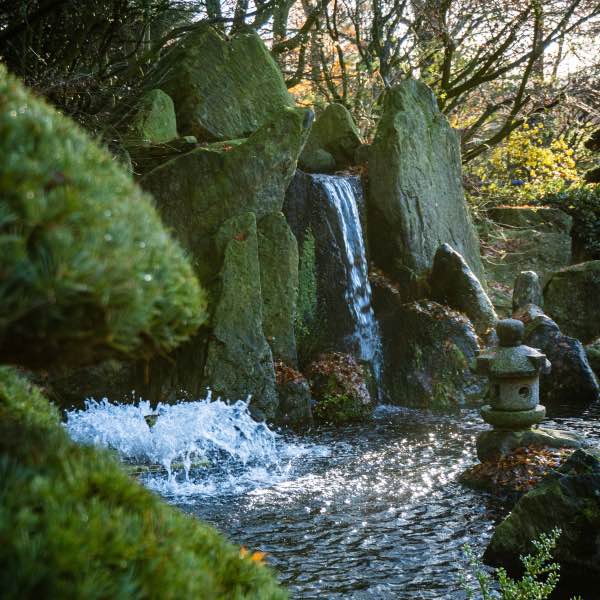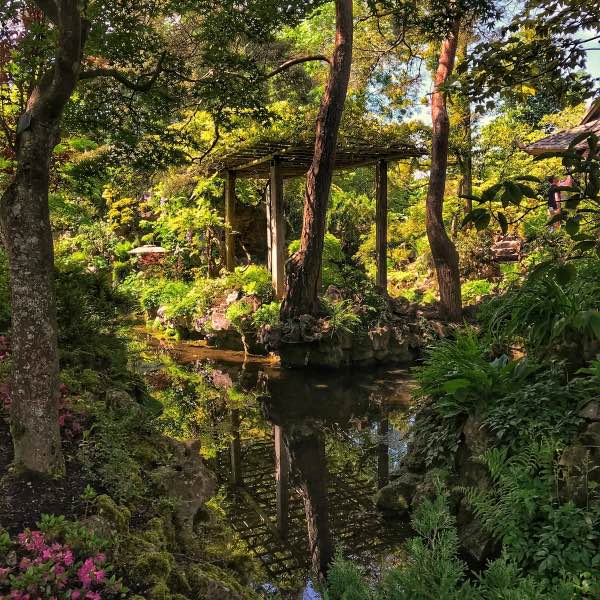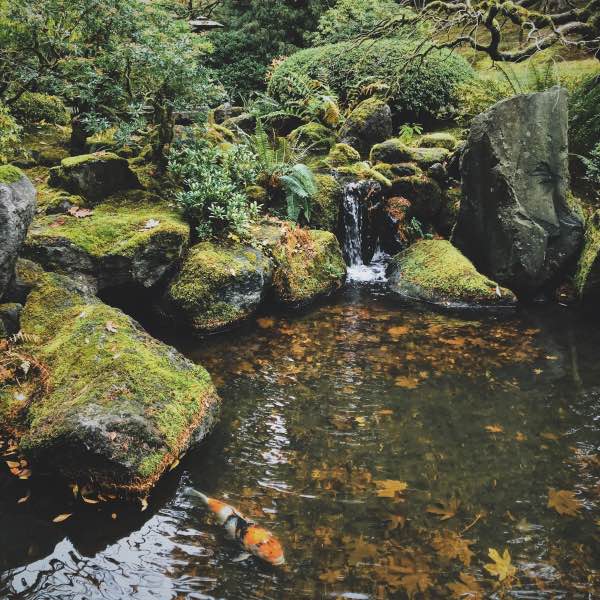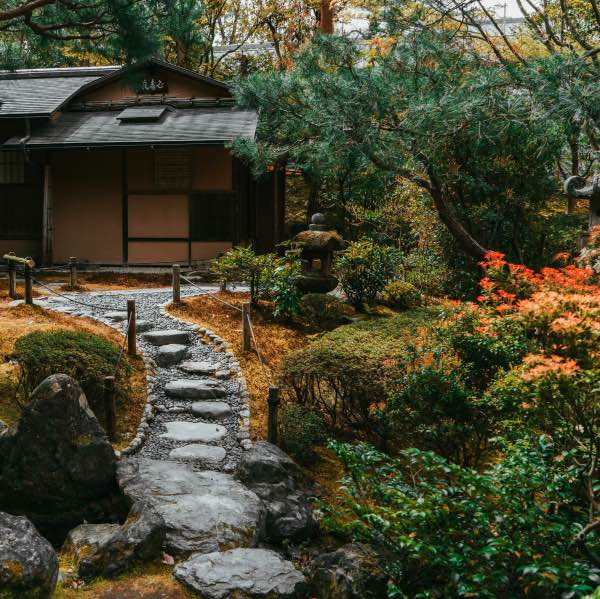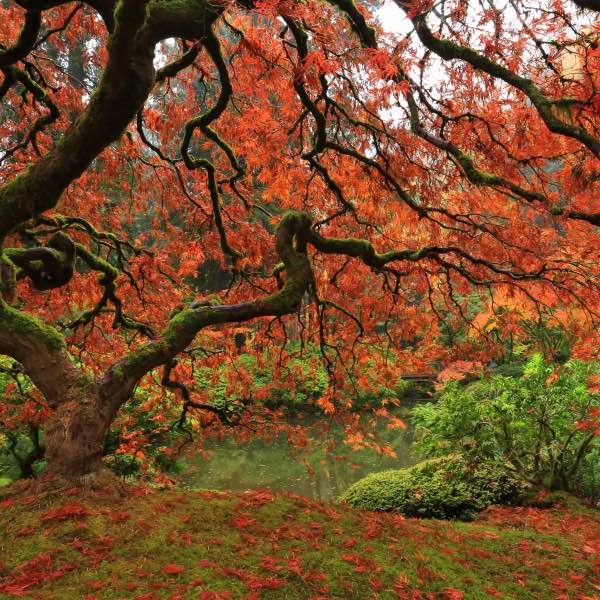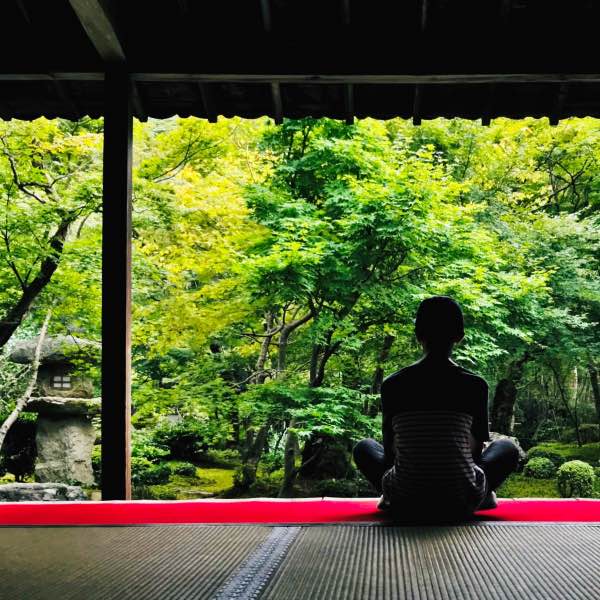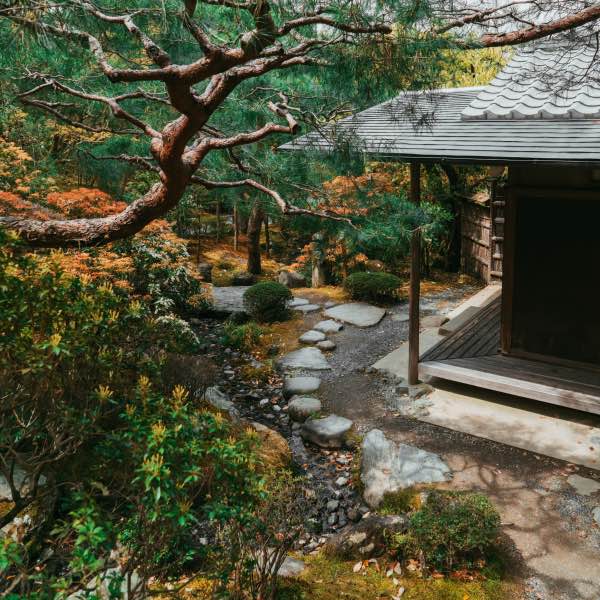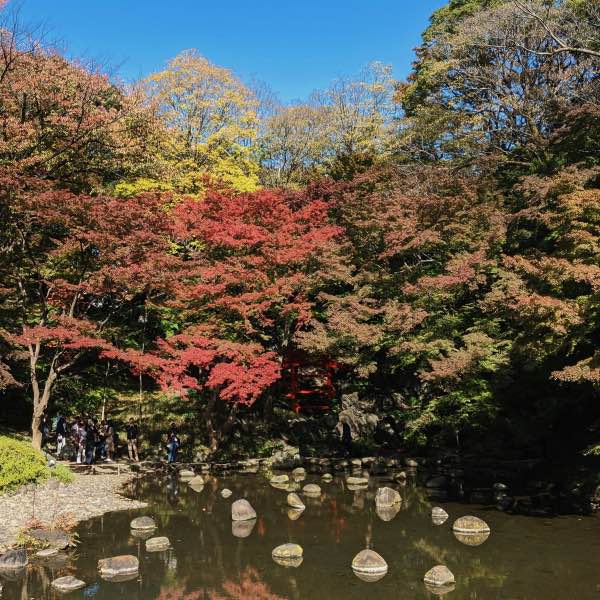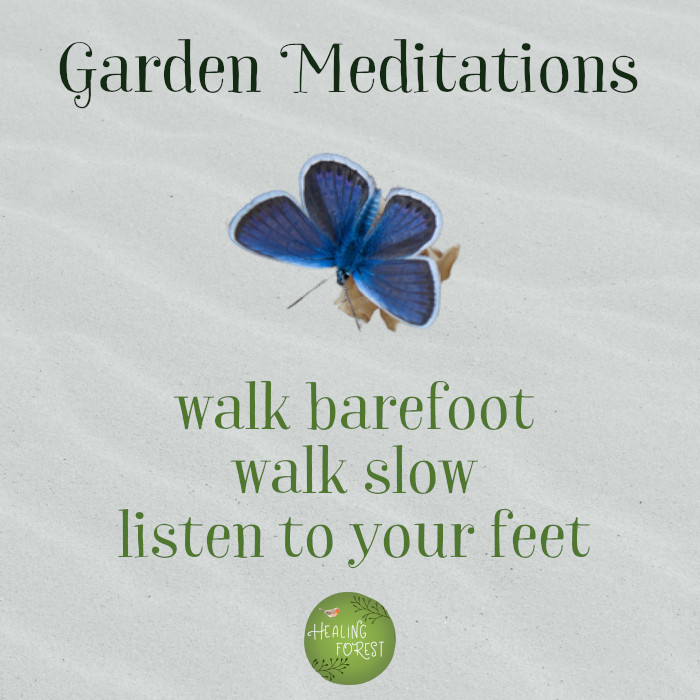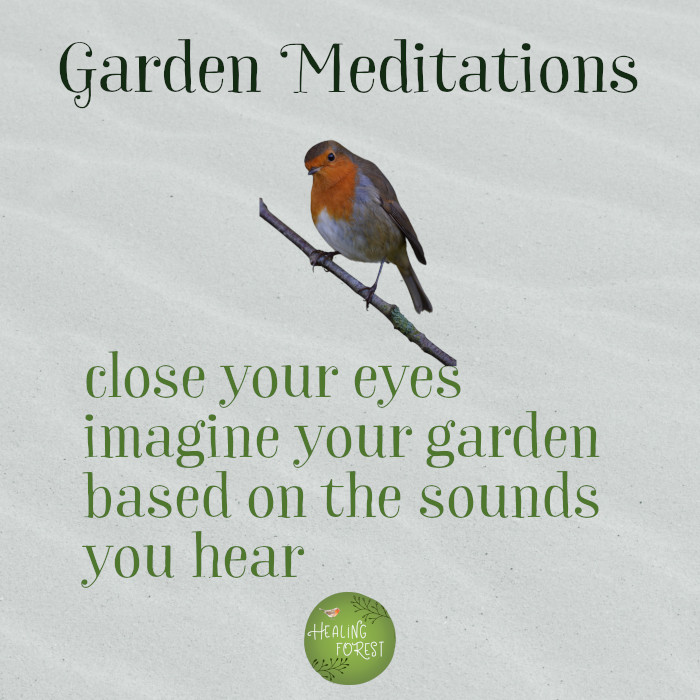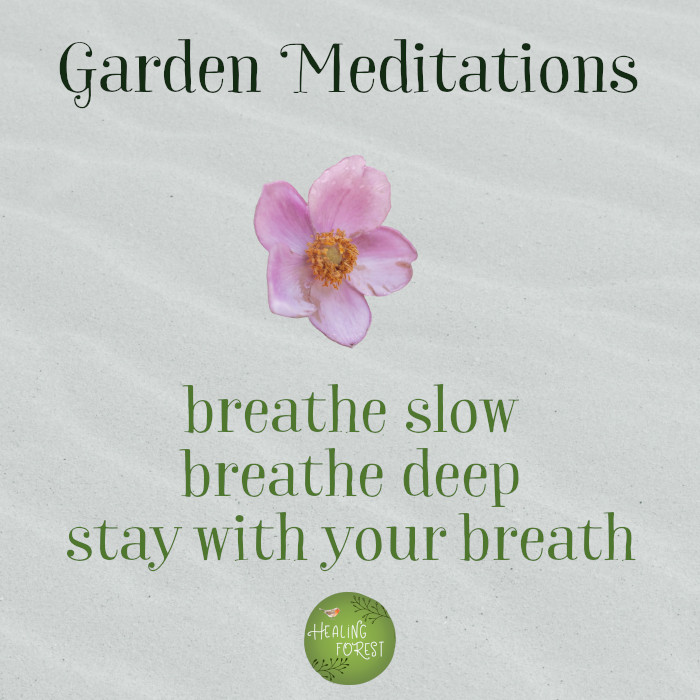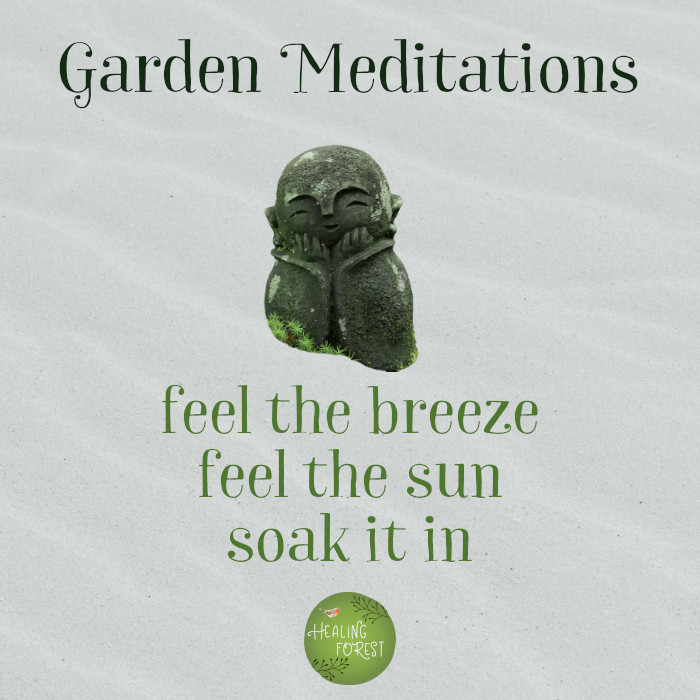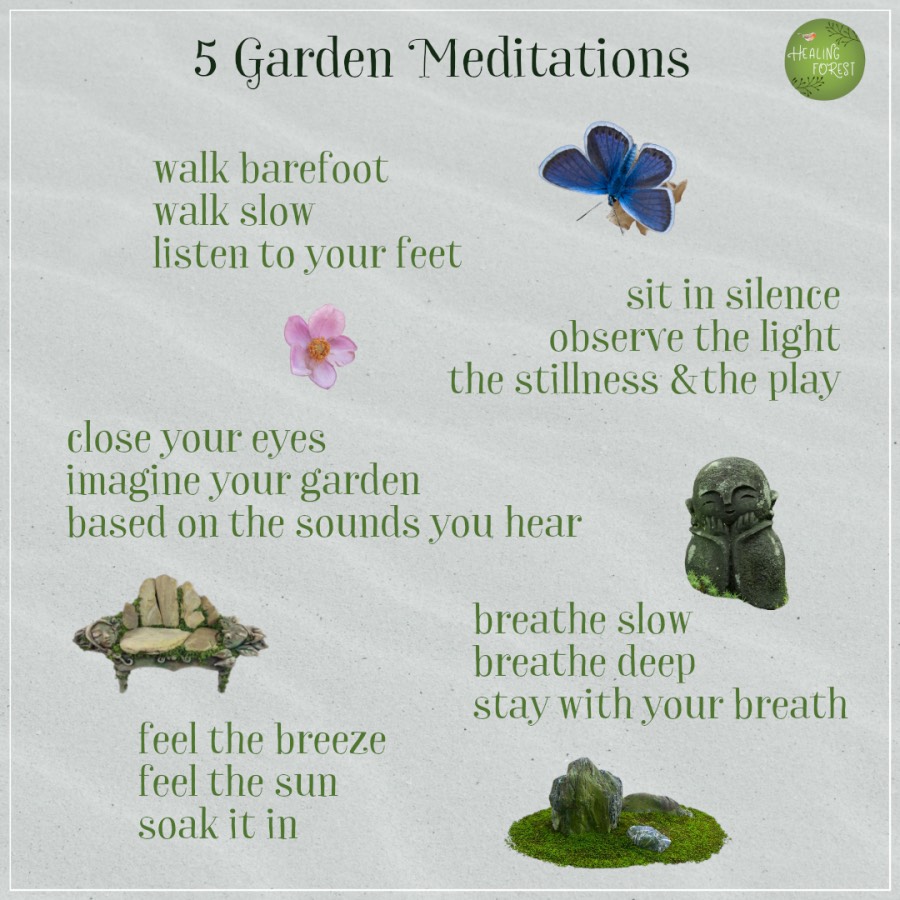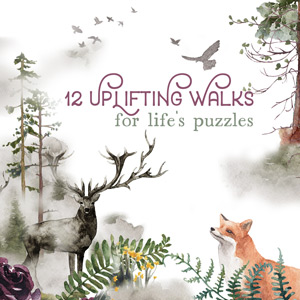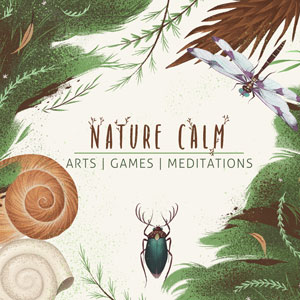How to create your own meditation garden and learn a variety of engaging garden meditations. Make an island of calm that you can return to, whenever you need.

Our city lives are slowly swallowing up our nature spaces and nature time. Even our interactions with other people are largely shifting to electronic screens. There is an increasing gap between our inner need for a true connection and our actual reality. Especially in these times of isolation and uncertainty we can observe growing signs of loneliness, anxiety, and depression in our society.
So what’s a simple and effective way to restore our connection with life and imbibe the healing benefits of nature. With our homes becoming our sanctuary, we can all bring a slice of calm, beauty, and joy into our lives through meditation gardens.
A true meditation garden is not about the space you have on ground, rather it is about creating the relation between your mind and your garden.
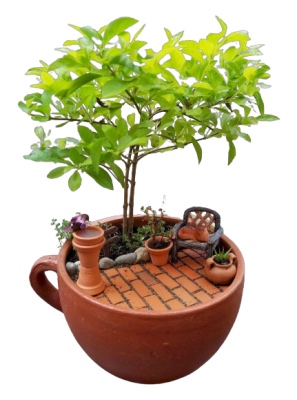
WHAT IS A MEDITATION GARDEN?
A meditation garden is an island of tranquility which allows you to connect with nature and with yourself. Living in a sea of turbulence, it offers you a space to plant seeds of peace, hope, wonder, and joy within you. With a few simple nature elements you can transform any garden into a meditation garden or create a new one from an inviting earth.
The heart of a meditation garden, beyond its visual appeal and the calming aesthetics is the thought, practice, and care which goes into connecting with your garden.
In this post we cover:
- Beautiful ideas to create your own meditation garden.
- Meditation garden elements that can enhance your experience.
- Philosophy behind their use.
- Inspiration and examples of meditation gardens.
- Some simple but powerful garden meditations.
- Origin of meditation gardens.
- Benefits of garden meditations.

MEDITATION IN THE GARDEN
Event though different cultures and countries adopt different approaches, the basic idea remains the same – to create a sense of peace and serenity. Working with your garden to bring out these emotions is a deep meditation in itself. There are many nature elements that can become a part of your meditation in the garden. The real art comes in creating balance and harmony between the different elements. Elements which convey the essence of nature and serve as a gateway to calm and clarity. The design elements should be simple, natural, and low maintenance.
Here is our list of recommendations, but feel free to add your thoughts and suggestions in the comments section below.
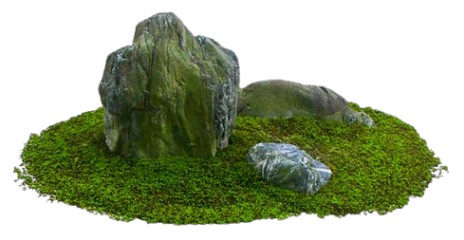
ROCKS
Rocks are storytellers of time. Sitting quietly in their corner, with stories tucked away in their folds and shapes. Those who have the patience to sit with them can journey in time and space. Their selection, size, shape and placement in relation to each other is very important. The rocks can give you an appearance of islands, valleys, and mountains – transporting you to different worlds.
WATER
Adding water adds movement, stillness, and reflection to your garden. The sight and sound of flowing water is intrinsically soothing and meditative. An ecologically conscious choice to save water is to use a tiny fountain that you can turn on, as and when required. A simpler and friendlier option to incorporate the water element is to have a vessel with clear water in it. Even a small vessel can hold the entire sky in it.
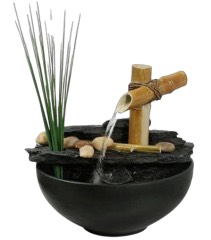
LAND
The lifeblood of your garden is the soil and earth it rests on. Interactions with the earth have a deep healing effect. Antidepressant microbes in soil result in the production of higher levels of serotonin in our body and lift our moods. Walking barefoot and working with the soil is a great meditation in itself. Bonus Tip: Having a composting unit, that turns your leaf litter into compost is a great addition to any garden. In nature nothing goes waste, and the process of transformation from waste to life-giving compost, is nourishing for the garden and filled with beautiful life-lessons for you. When life gives you crap – compost it.
LIFE
The plants that you choose to be a part of your garden create the character of your space. Combining plants that grow to different heights and form layers creates a beautiful image of a tiny forest. It leads to an optimal use of space and is beneficial for the plants themselves. Other important factors to consider are color, texture, fragrance, and form. Native plants are the best choice for your garden. They are low in maintenance and will attract a lot of native birds, butterflies, and bees.
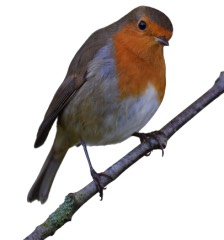
PATHS
Creating contours and curves in your garden has a relaxing effect on your mind. It is a sharp contrast to the straight lines of our houses, cars, and offices. You can consider adding meandering paths and labyrinths for slow mindful walks.
YOU
The secret ingredient of any meditation garden is you. Creating a small bench or a place to sit and contemplate in peace, forms an essential cornerstone of the garden. You can also place certain objects or statues that bring you peace of mind. Another addition could be baritone wind chimes or meditation bells for gentle sound.
All these elements are a starting point for your creativity. Space and balance are very important, as is motion and tranquility. Add in lots of flow and elements that can help you focus in the right state of mind. Start small and let the garden evolve, first in your mind and then on the ground.

MEDITATION GARDEN IDEAS
Given below is a slideshow of some ideas and design inspirations for meditation gardens from different corners of the world. It is just a reference, to observe the use of different elements. Click on the arrows to scroll through. Notice the emotion in each.
Image Credits: Liam Read. Karen Oeu. Ewan Hutchinson. Jeff Finley. Fezbot. David Wirzba. Hideki Nishiyama. Note Thanun. Cover image: Cody Weaver. | Unsplash
5 GARDEN MEDITATIONS
Having a meditation garden and not knowing how to meditate with it is like having a car and not knowing how to drive. While someone else can drive the car for us, but only we can meditate for ourselves. Given below are some simple garden meditations. You can find many more throughout our website. (find your calm here)
The first stumbling block for beginners is trying to set a goal or desired outcome for your meditation. Instead, the meditation becomes far more effective if we learn to simply enjoy the process. One can think of garden meditations as spending time with a close friend. Without any effort. Without any pretense.
A free download link of these 5 garden meditations is given at the end of this post.
Each one of us will have our own unique way of meditating in the garden. But the precious insights we find, will connect us to something that’s universal.
“There is random love in the universe. Some of it is unconditional. Some of it is for you.”
Auburn Sandstorm
MEDITATION GARDENS ORIGIN
Historians estimate that the first gardens came to life about 10,000 B.C. – along overgrown river banks and the wet foothills of monsoon regions in India and Asia. By cordoning off places for personal use, these gardens were primarily “forest gardens”. They were used as a source for food and a protection barrier. Much later, with the emergence of the first civilizations, wealthy influential leaders in societies began to create gardens purely for aesthetic purposes.
Spiritual gardens emerged in Japan in the 8th century CE. The arrangement consisted mainly of of rocks. In the Zen tradition, the gardens served to remind practitioners that life can be elemental, simple. The first Zen gardens were called “zazen-seki”, “meditation rocks” because of their simplicity. The essence was to radiate silence, calm, and tranquility to anyone contemplating them.
In the current day, meditation gardens are present all over the world. The famous public ones being found all the way from Kyoto (Japan) to Glasgow (Scotland) and San Francisco (USA). But public meditation gardens are more of tourist attractions. To get the most authentic experience of a meditation garden you have to create one. The process of creating your own meditation garden, is the real meditation.
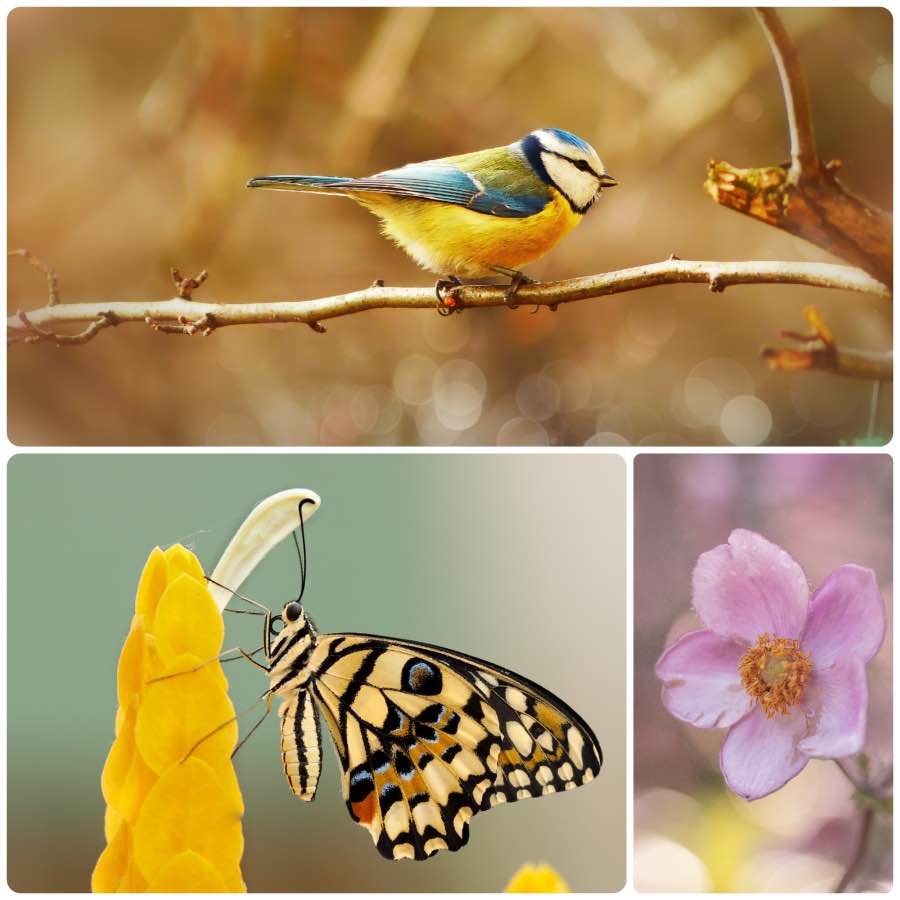
GARDEN MEDITATION BENEFITS
Within our hyperactive lives, spending even a few contemplative moments can lead to a wide range of benefits. Gardens across history and geography – over different periods of time and different cultures tell us that humans have always found aid and assistance through their gardens.
Meditation gardens are an effective way to clear your head, get grounded, and gain strength in this hyperactive, chaotic modern world. They can even help physically by lowering blood pressure, strengthening the immune system, improving general brain function, and lessening pain & inflammation.
Scientists have found that spending two hours a week in nature is linked to better health and well-being. The National Health Service in United Kingdom has prescribed time in nature and community gardening projects as part of “green prescriptions”. In Shetland for example, islanders with depression and anxiety may be given “nature prescriptions”, with doctors there recommending walks and activities that allow people to connect with the outdoors. (Source)
Robert Fox
“Gardens are our teachers. There is a gardener in all of us, especially when tragedy is at our doorstep.”

In Nature things change with time. So will your garden, as will you. We hope these changes become a part of your learning journey and sow seeds of positive transformation across your life.
Do you have a meditation garden tip for us? Add it in the comments for all the other readers. To know more about the Healing Forest project, you can visit our homepage. Subscribe to our monthly newsletter and get new ideas and articles in your inbox once a month: Subscribe link.
Download 5 garden meditation posters. We hope you liked this post. Please do share it in your circles with those who may find it of help.

